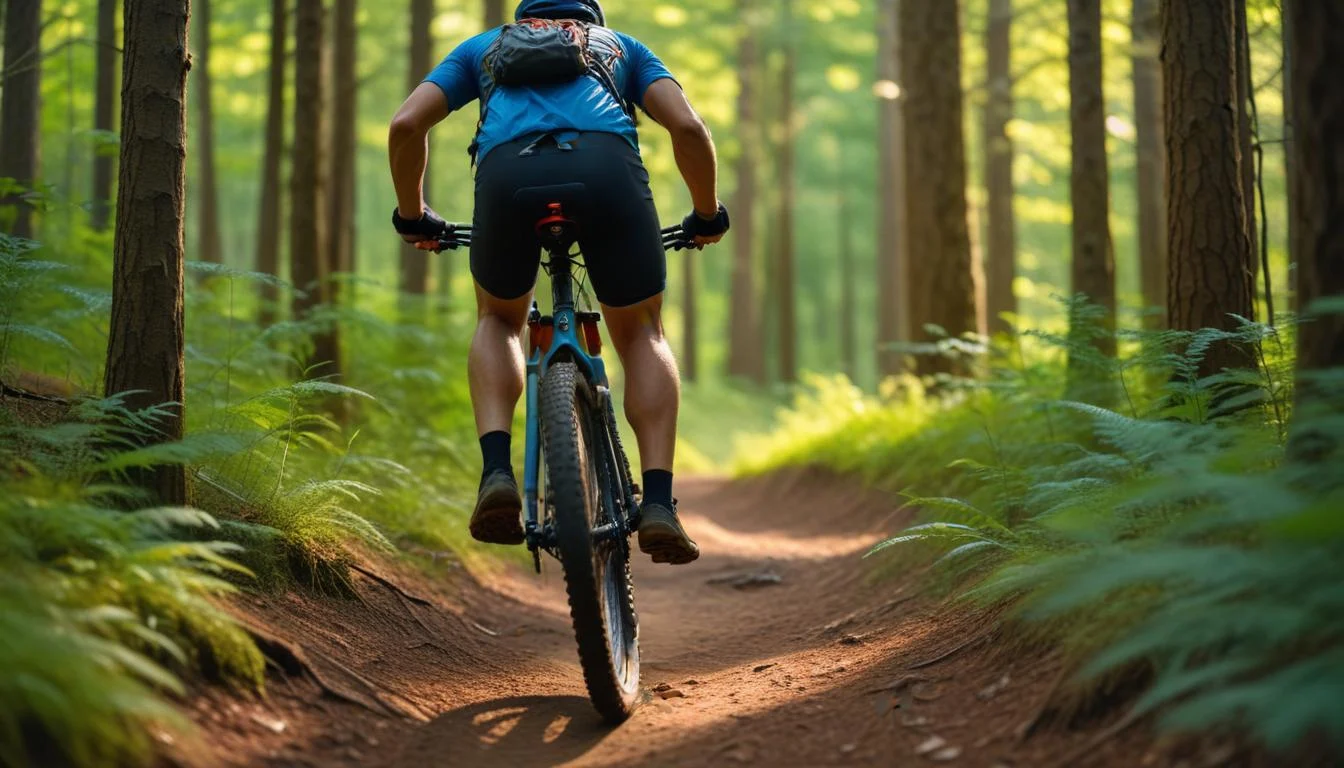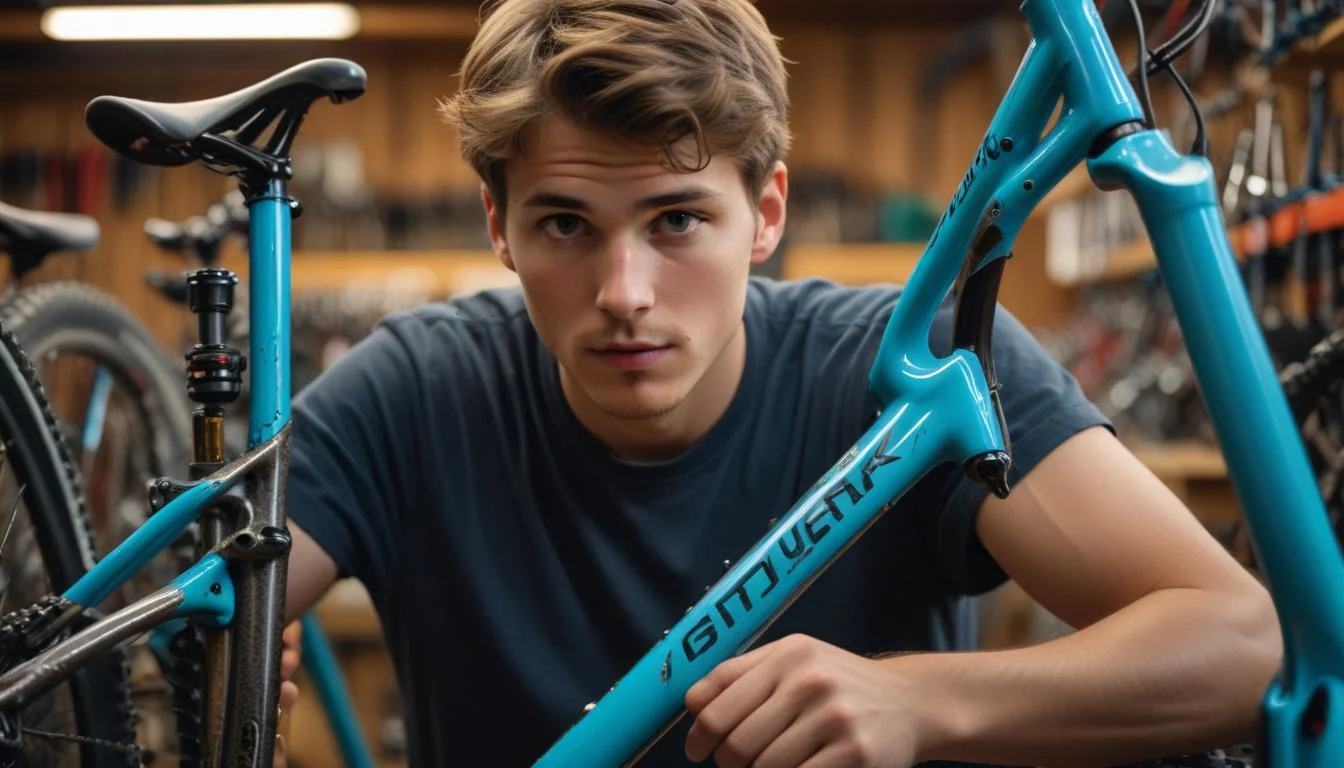 🔔 Affiliate Disclosure
This content may contain affiliate links. If you click on a link and make a purchase, we may receive a small commission — at no extra cost to you. Thank you for supporting BeatInsights! 💛
🔔 Affiliate Disclosure
This content may contain affiliate links. If you click on a link and make a purchase, we may receive a small commission — at no extra cost to you. Thank you for supporting BeatInsights! 💛
Mountain biking is a rush. Picture flying down trails, feeling the wind. New bikes, however, can cost thousands. This price tag stops many from trying this great sport. Used mountain bikes offer a smart way around this hurdle. They provide a cheaper way to get into riding. This article explores the benefits of buying used. It covers risks and how to avoid them. It includes a mountain bike inspection checklist. You will learn where to find cheap mountain bikes for sale. This guide helps you score a great second hand mountain bike components or a complete bike. The goal is to help you find used Mountain Bikes without breaking the bank. We want to guide you through buying used mountain bike. Finally, we provide a comprehensive mountain bike inspection checklist.
Why Consider Used Mountain Bikes?
Cost Savings with Used Bikes
New mountain bikes can be expensive. High-end models cost several thousand dollars. Used bikes offer big savings. For example, a new Specialized Stumpjumper might cost $3000. A similar used model, a few years old, could be half that price. Bikes, like cars, lose value fast. This depreciation benefits buyers of used bikes. You can get a great bike for less.
Get More Bike for Your Buck
Bicycle Blue Book helps you determine bike value.

A used bike lets you upgrade your components. You can get higher-end parts for the same price. Imagine a budget of $1500. A new entry-level bike has basic components. However, a used bike at this price might have better suspension or brakes. This means a better riding experience. You get more performance for your money.
Benefits for the Environment
Making new bikes uses resources. It also creates pollution. Buying used is more sustainable. It reduces the demand for new manufacturing. This, in turn, lowers the environmental impact. Choosing a used bike is an eco-friendly choice. You are helping to conserve resources.
Test the Waters with a Used Bike
Unsure about mountain biking? A used bike is a great entry point. It’s a lower-risk way to try the sport. You can learn if you enjoy it without a huge investment. If you love it, you can always upgrade later. If not, you can resell the used bike. You won’t lose as much money as with a new one.
Assessing Risks When Buying Used Mountain Bikes
Spotting Hidden Damage
Used bikes can have hidden issues. Thorough inspection is key. Check the frame carefully. Look for cracks or dents. Test the suspension. Make sure the brakes work well. A careful check avoids surprises later.
Addressing Wear and Tear
Parts wear out with use. Chains stretch. Cassettes wear down. Brake pads get thin. Check these parts carefully. Ask about their age and condition. Factor in replacement costs. For example, a new chain and cassette might cost $100-$200. Budget for these potential repairs.
Identifying Frame Problems
Frame damage is serious. Cracks weaken the bike. Dents can affect handling. Check welds for cracks. Look for corrosion or rust. Especially in steel frames. Any frame damage is a red flag. It might mean the bike is unsafe to ride.
Ensuring Compatibility and Fit
Getting the right size bike is vital. A bike that is too big or small is uncomfortable. It can even be dangerous. Old bikes might have outdated standards. Parts might be hard to find. Check the bike’s specifications. Make sure it fits your needs. It is important to ensure parts are readily available.
The Ultimate Mountain Bike Inspection Checklist
Frame Inspection Checklist
Examine the frame closely. Look for cracks, especially around welds. Dents can weaken the frame. Corrosion or rust is bad news. It indicates poor maintenance. Each type of damage impacts the bike’s strength. Cracks are the most dangerous. They can lead to sudden failure. Dents can alter the bike’s handling. Rust weakens the metal over time.
Suspension Inspection Checklist
Check the fork and shock. Look for leaks around the seals. Test the suspension travel. It should feel smooth and controlled. Bounce the bike to test responsiveness. S mushy or sticky feel can mean problems. Suspension issues affect ride quality. They can also be costly to repair. A fork rebuild might cost $150-$250.
Drivetrain Inspection Checklist
Check chain wear with a chain checker. These tools are cheap and easy to use. Worn chains damage cassettes and chainrings. Look at the cassette and chainring teeth. They should be square and sharp. Rounded or hooked teeth mean wear. Test the derailleur shifting. It should be smooth and precise. Hesitation or skipping indicates a problem. A worn drivetrain reduces efficiency. It can also cause poor shifting performance.
Brakes Inspection Checklist
Check the brake lever feel. It should be firm, not spongy. Spongy levers mean air in the system. Inspect brake pad thickness. Replace pads if they are thin. Check rotor condition. Look for warping or scoring. Inspect hydraulic brake lines for leaks. Brake problems compromise safety. Always fix them before riding.
Wheels and Tires Inspection Checklist
Check wheel trueness. Spin the wheels and watch for wobbles. Loose spokes cause wheels to be untrue. Inspect rims for damage. Look for dents or cracks. Check tire condition. Look for tread wear and sidewall damage. Replace worn or damaged tires. Wheel and tire problems affect handling. They can also lead to flats.
Conclusion
Used mountain bikes offer a smart and affordable way to enjoy the sport. They provide cost savings and environmental benefits. However, careful inspection is key. Following the mountain bike inspection checklist helps avoid risks. By understanding potential issues, you can make an informed decision. This ensures you get a safe and enjoyable ride. So, explore the world of cheap mountain bikes for sale. Find the perfect used mountain bike for your next adventure. Remember the valuable advice about buying used mountain bike and acquiring second hand mountain bike components.
Buying used mountain bikes can save money. But knowing what to check is vital. This guide covers inspecting second hand mountain bike components and frames. It also discusses where to find cheap mountain bikes for sale and how to negotiate. Following a mountain bike inspection checklist helps. This ensures you get a good ride. Careful checks are crucial when buying used mountain bikes.
Other Components to Inspect
Beyond the frame and drivetrain, several other components need attention. A careful look at these parts can prevent future problems. Small issues now can become big expenses later.
Headset: Smoothness and Play
The headset allows your fork to turn smoothly. Check for any roughness or play. Place your hand on the headset. Rock the bike back and forth. Feel for knocking or looseness. A smooth headset provides better handling. A worn one needs replacement.
Bottom Bracket: Play and Creaking
The bottom bracket connects the cranks to the frame. It should spin freely. Listen for creaking sounds. Feel for play by wiggling the cranks side to side. Creaking means potential bearing issues. Play indicates wear.
Handlebars and Stem: Tightness and Damage
Check the handlebars and stem for tightness. Ensure they are properly tightened to the fork. Look for any cracks or dents. Damage here can lead to dangerous failures. Replace damaged parts immediately.
Seatpost: Functionality and Damage
The seatpost holds the saddle. Make sure it moves up and down easily. Check for cracks or bends. A damaged seatpost can break under weight. This could cause an accident. Ensure the clamp works well too.

Where to Buy Used Mountain Bikes
Finding used mountain bikes involves several options. Each has its own pros and cons. Weigh these carefully before making a purchase. Location is key to finding great used Mountain Bikes.
Online Marketplaces
- Pros and cons: Sites like Pinkbike BuySell, Craigslist, Facebook Marketplace, and eBay offer wide selections. You can find many cheap mountain bikes for sale. However, you can’t inspect the bike in person before buying.
- Tips for safe online transactions: Use secure payment methods like PayPal. Meet in a public place for pick-up. Inspect the bike thoroughly before handing over the money. Ask questions. Verify the seller’s identity.
Local Bike Shops
- Benefits: Reputable shops offer warranties and expertise. They often tune up used bikes before selling them. This provides added value and peace of mind.
- Negotiating tips: Ask about any discounts or service packages. Mention any flaws you find. Be polite but firm. Shops might be willing to lower the price.
Bike Swaps and Consignment Shops
- Advantages and disadvantages: Bike swaps can offer good deals. Consignment shops handle the sale for you. Swaps may lack warranties. Consignment shops charge fees.
- Finding local swaps and shops: Search online for local cycling groups. Check community bulletin boards. Ask at local bike shops for referrals.
Friends and Acquaintances
- Benefits: Buying from someone you know provides trust. You might get a better deal. You could also get a more honest assessment of the bike’s condition.
- Importance of inspection: Still do a thorough mountain bike inspection checklist. Don’t rely solely on their word. Check every component carefully.
Negotiating the Price
Negotiating the price is a key step. It ensures you get a fair deal on used Mountain Bikes. Be prepared and informed.
Research the Market Value
Determine a fair price by researching similar bikes. Check online marketplaces for comparable models. Consider the bike’s condition and components. This helps you make a reasonable offer.
Point Out Flaws and Issues
Politely highlight any problems you find during inspection. Mention scratches, worn parts, or mechanical issues. Use these points to justify a lower price. Be respectful and factual.
Be Prepared to Walk Away
Don’t feel pressured to buy. If the seller won’t negotiate fairly, walk away. There are other used mountain bikes available. Knowing your limit is vital.
Offer a Fair Price
Suggest a reasonable price based on your research and the bike’s condition. Justify your offer with specific examples of flaws. Be prepared to negotiate upward slightly. However, stick to your budget.
Maintenance and Upgrades After Purchase
After buying, maintenance and upgrades are important. They keep your bike running smoothly. Budget for these ongoing costs.
Essential Maintenance
- Cleaning: Wash your bike regularly to remove dirt and grime. Use a bike-specific cleaner like Muc-Off.
- Lubrication: Lubricate the chain, cables, and pivot points. Use a quality bike lubricant like Finish Line.
- Chain Replacement: Replace the chain regularly. A worn chain damages the cassette and chainrings.
- Brake Adjustments: Keep your brakes properly adjusted. Ensure they stop you effectively and safely.
Common Upgrades
- Tires: Upgrading tires improves grip and rolling resistance. Consider brands like Maxxis or Schwalbe.
- Grips: New grips enhance comfort and control. Look at options from ODI or ESI Grips.
- Pedals: Better pedals improve power transfer. Brands like Crankbrothers and Shimano offer great choices.
- Saddle: A more comfortable saddle makes long rides more enjoyable. Check out saddles from WTB or SQlab.
- Benefits: Upgrading components enhances performance and comfort. It improves your riding experience.

When to Seek Professional Help
Complex repairs are best left to a bike mechanic. Examples include suspension rebuilds or wheel truing. Find a reputable local bike shop. This ensures the job is done right.
Budgeting for Maintenance and Upgrades
Factor in ongoing costs of bike ownership. Set aside money for maintenance and repairs. This keeps your bike in good working order. A little now saves you big later when buying used mountain bikes.
Conclusion
Buying used offers both benefits and risks. Careful inspection and research are essential. However, buying used mountain bike can save you money. Always take your mountain bike inspection checklist with you! Explore the thrill of mountain biking. Do not let a small budget limit your passion.
Share your experiences buying used bikes in the comments below.




